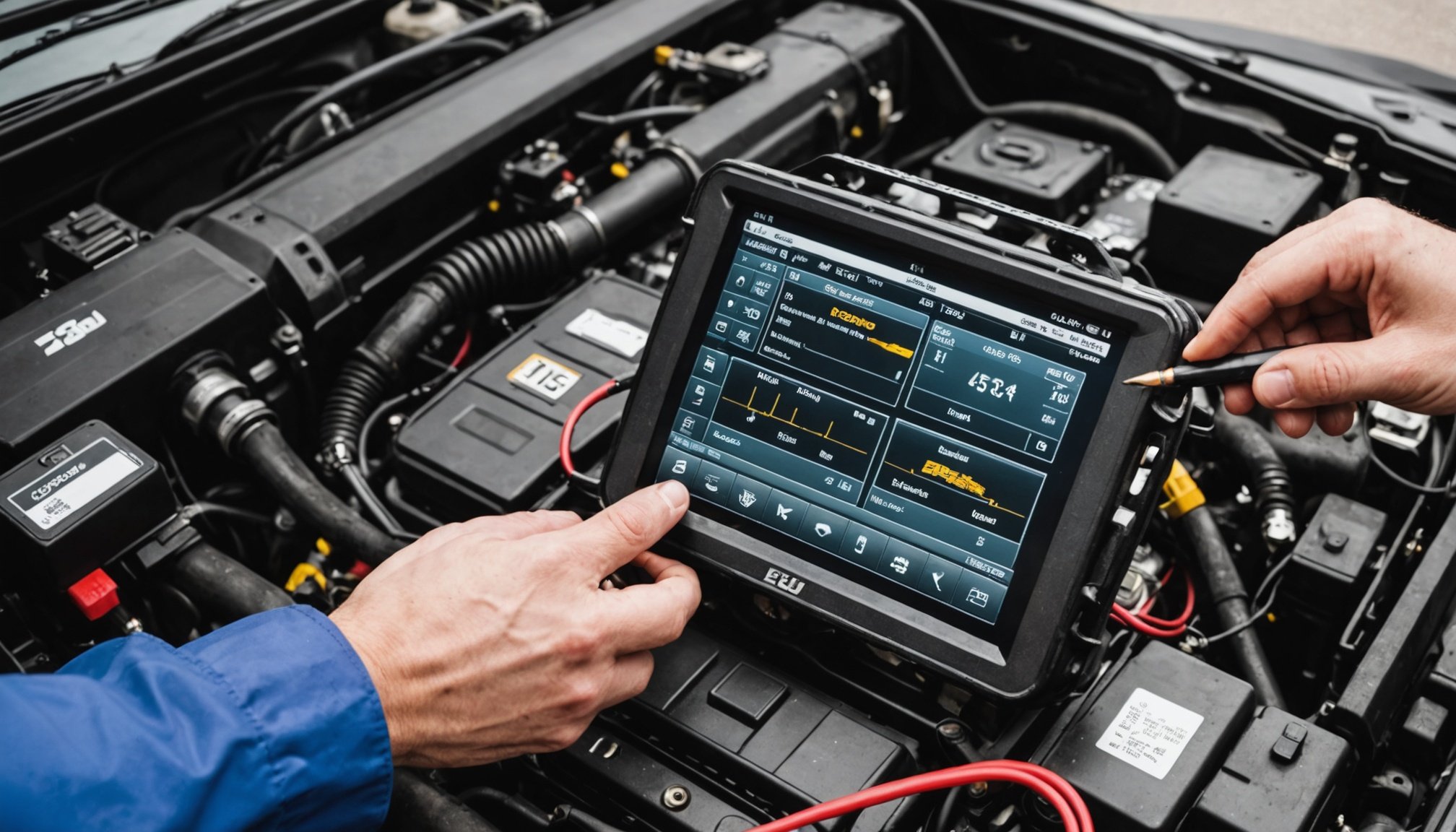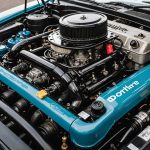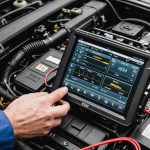Understanding ECU Functions and Importance
In today’s modern vehicles, the Engine Control Unit (ECU) plays a crucial role, acting as the brain of the vehicle. It orchestrates a myriad of functions, ensuring optimal performance and efficiency. The ECU oversees systems such as fuel injection, ignition timing, and even keeps emissions in check. Without it, a vehicle would struggle to deliver the seamless performance drivers have come to expect.
The importance of the ECU in vehicle performance cannot be overstated. It ensures that various components work in harmony, thereby maximizing efficiency and reducing fuel consumption. By carefully adjusting the engine parameters, the ECU enhances both power and economy, rectifying any imbalance that might hinder performance. This balance is essential for maintaining not just speed and agility, but also for ensuring environmental compliance.
Also to discover : Enhance your vehicle”s cooling system: unlocking peak performance in the uk’s variable weather conditions
Despite its critical role, there remain common misconceptions about ECU functions. Many assume the ECU’s responsibilities are limited to basic engine management. In reality, its reach extends well beyond, connecting to onboard diagnostics and systems that enhance safety. Understanding these broader capabilities can empower vehicle owners to appreciate the sophisticated technology behind their driving experience, dispelling any myths around its functionality and highlighting its indispensability to modern motoring.
Common ECU Issues in UK Vehicles
Issues with the Engine Control Unit (ECU) can be troublesome for UK vehicle owners, leading to various performance concerns. Recognising common symptoms of ECU malfunction can be vital in maintaining a vehicle’s performance. One prevalent issue is unexpected engine stalling or misfires, often related to faulty ECU signals. Another symptom might include poor fuel efficiency, which can be a result of incorrect fuel mixture regulated by the ECU.
Also read : Top care strategies for your retractable hardtop convertible amidst the uk”s varied weather
Drivers may also observe illumination of the “Check Engine” light. This alert can indicate anything from minor sensor glitches to severe ECU failures. Additionally, difficulty in starting the vehicle could suggest ECU problems needing immediate attention. Environmental factors in the UK, such as humidity and temperature fluctuations, can further impact ECU reliability.
Understanding these symptoms is essential for early diagnosis. When facing persistent issues, using professional diagnostic tools becomes crucial. These tools read trouble codes stored in the vehicle’s computer, providing insights into potential ECU failures. Addressing ECU problems promptly can prevent more extensive damage and costly repairs, ensuring the vehicle remains in optimal condition. For UK vehicles, staying aware of these common ECU problems can help avert prolonged malfunctions and unexpected breakdowns.
Diagnostic Methods for ECU Problems
When ECU issues arise, understanding effective diagnostic methods is crucial for accurate troubleshooting. Diagnostic tools, such as OBD-II scanners, play a vital role in identifying and resolving ECU-related problems. These devices connect to the vehicle’s onboard system, allowing users to read diagnostic trouble codes (DTCs). By interpreting these codes, vehicle owners can pinpoint specific errors affecting the ECU’s performance.
An OBD-II scanner is relatively straightforward to use. Here’s a basic step-by-step guide:
-
Locate the OBD-II port usually found beneath the steering wheel.
-
Plug in the OBD-II scanner and turn on the ignition without starting the engine.
-
Follow the on-screen instructions to read the DTCs.
-
Record the codes displayed, which often come with a brief description of the issue.
-
Research the codes using the scanner’s manual or online databases to understand potential causes and fixes.
Once you have the codes, they need interpretation to guide the repair process effectively. Each code corresponds to a specific problem, and understanding their implications is key to successful troubleshooting. This strategic approach ensures that ECU problems are addressed accurately, minimising guesswork and the potential for costly repairs.
Step-by-Step Troubleshooting Process
Effective ECU troubleshooting can often be complex, yet it’s crucial for tackling mechanical issues efficiently. Following a detailed process helps ensure accurate diagnosis and repair. Begin by conducting thorough system checks. This includes examining wiring and fuses for visible damage, as faulty connections frequently mimic ECU complications. Maintaining a systematic approach prevents overlooking simple fixes.
Before delving into repairs, it’s essential to verify symptoms consistently align with ECU malfunctions. Misidentifying issues can lead to unnecessary parts replacement, escalating costs. When conducting checks, prioritise eradicating common troubleshooting mistakes, like neglecting to document errors or skipping verification tests.
Here is a basic sequential approach to troubleshooting:
- Identify symptoms: Confirm the vehicle’s faults correlate with known ECU problems.
- Preliminary checks: Inspect for physical damage and verify all connections.
- Use diagnostic tools: Capture error codes to pinpoint the root problem.
- Assess repair feasibility: Consider DIY repairs only if confident in the processes.
- Rely on professional expertise: When problems persist, seek professional assistance.
Adherence to this thorough method enhances the potential for effective, efficient ECU troubleshooting and ultimately, successful repairs, significantly minimising downtime and ensuring vehicle reliability.
Repair Options for ECU Malfunctions
When faced with ECU malfunctions, understanding your repair options can greatly influence the outcome. Generally, two primary choices exist: DIY repairs and professional servicing. Each option has unique benefits and challenges that must be considered.
DIY repairs can seem appealing to those with a penchant for hands-on solutions. They offer potential cost savings and the satisfaction of resolving issues independently. Tasks like resetting the ECU or replacing simple components might be feasible for an experienced car owner. However, it’s crucial to have accurate knowledge and tools, as DIY efforts lacking precision can exacerbate problems or void warranties.
In contrast, seeking professional ECU servicing is advisable when issues persist or when diagnostic complexities arise. Experts possess advanced tools and in-depth understanding, ensuring effective diagnosis and repair with minimal risk to the vehicle. This service often involves comprehensive inspections that identify underlying issues, preventing future malfunctions.
Costs for these services can vary. DIY repairs may initially seem cheaper but could become costly due to unforeseen errors. Professional servicing, although potentially pricier upfront, often ensures precision and longevity. Weighing these factors will guide you effectively in deciding between these ECU repair methods.
Maintenance Tips for Preventing ECU Issues
Maintaining the Engine Control Unit (ECU) in top condition requires a proactive approach. Regular maintenance is essential to support the longevity and performance of your vehicle’s ECU. This involves routine checks of the vehicle’s electrical system, ensuring all connections are secure and free from corrosion. Paying attention to the state of wiring can prevent disruption in the ECU’s functions, safeguarding against unexpected failures.
Another key element in ECU upkeep is keeping the software updated. Software updates often contain crucial enhancements that prevent bugs and enhance the ECU’s efficiency, particularly in adapting to evolving environmental regulations and vehicle performance standards. Subscribers to manufacturer updates can ensure their vehicle remains compliant and efficient.
Implementing best practices like avoiding extreme temperatures can also protect the ECU. Shielding your vehicle from severe weather, whether through garage storage or protective covers, mitigates risks of electronic component degradation.
Lastly, regular diagnostic checks with tools such as OBD-II scanners can preemptively identify any potential issues, allowing for timely interventions. This vigilance, combined with attention to basic vehicle maintenance needs, ensures that the ECU remains reliable, preventing the need for costly repairs and maintaining robust vehicle performance.
Maintenance Tips for Preventing ECU Issues
Maintaining the Engine Control Unit (ECU) in peak condition is key for ensuring reliable vehicle performance. Regular ECU maintenance is crucial, which includes periodic checks of the vehicle’s electrical system. Ensuring all connections are secure and checking for corrosion helps avoid potential malfunctions. Worn wiring can disrupt ECU functions and may lead to unexpected failures, so regular inspections should be a priority.
Software updates are also vital for optimal ECU performance. These updates often introduce enhancements that fix bugs and improve efficiency. This is especially important for aligning with new environmental regulations and optimizing overall vehicle standards. Ensuring you have the latest updates from the manufacturer guarantees the ECU operates at its best.
To protect the ECU from adverse influences, it’s advisable to avoid exposing the vehicle to extreme temperatures. Shielding it from harsh weather conditions, either by using garage storage or protective covers, can prevent ECU-related failures.
Utilizing diagnostic tools like OBD-II scanners can preemptively spot potential issues, allowing for earlier intervention. Coupled with routine vehicle maintenance, these strategies help keep the ECU in excellent condition, reducing the likelihood of expensive repairs and ensuring the vehicle runs smoothly.
Frequently Asked Questions about ECU Issues
Navigating ECU malfunctions often leads to several common queries. One frequent inquiry is: What causes an ECU fault? Faults often result from electrical issues, software bugs, or physical damage. Moisture and extreme temperatures can also negatively impact ECU functions, leading to errors or failures.
Another question arises: How can you distinguish between ECU issues and other vehicle problems? While tricky, it’s crucial to recognise that ECU symptoms, such as erratic engine behaviour or illuminated warning lights, might overlap with other malfunctions. Diagnosing with tools like OBD-II scanners helps confirm specific ECU failures, separating them from unrelated issues.
A pertinent concern is whether an ECU failure is covered under warranty. Typically, vehicle warranties do cover ECU repairs or replacements within a specified timeframe, provided the issue wasn’t caused by aftermarket modifications or user error. Always check your warranty terms to confirm eligibility.
For those wondering about the impact of ECU repairs on vehicle performance, rest assured. Proper repairs or replacements can restore, if not enhance, vehicle efficiency and reliability. Seeking expert advice ensures accurate diagnosis and lasting solutions. Understanding these common inquiries helps temper concerns and provides clarity in managing ECU-related challenges.
Case Studies and Real-life Scenarios
Exploring real-life ECU case studies provides valuable insights into common issues and their solutions, particularly in the UK context. A prevalent problem observed in many cases involves sudden engine stalls and misfires. Such symptoms often result from water ingress into the ECU, a frequent issue in the UK’s moist climate.
Lessons from Specific Repair Scenarios
In one detailed scenario, a UK vehicle owner experienced erratic vehicle performance following persistent heavy rainfall. Upon investigation, professionals identified corrosion around the ECU connectors, causing poor signal transmission. By addressing the corrosion and ensuring watertight seals, the vehicle’s performance was fully restored. This underscores the importance of protecting ECU components against environmental factors.
Impact on General Troubleshooting Approaches
Personal experiences in solving ECU issues reveal that early detection is crucial. Owners often report better outcomes when symptoms are addressed promptly. Regular system diagnostics can preempt potential problems, allowing for economical repairs before issues worsen.
Through analysing these real-life examples, vehicle owners can adopt more systematic troubleshooting approaches. Understanding how everyday challenges impact the Engine Control Unit aids in forming preventive measures and helps emphasise the importance of ongoing vehicle maintenance.











